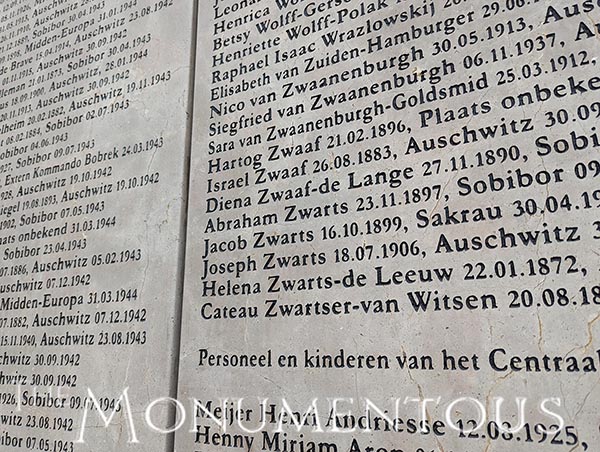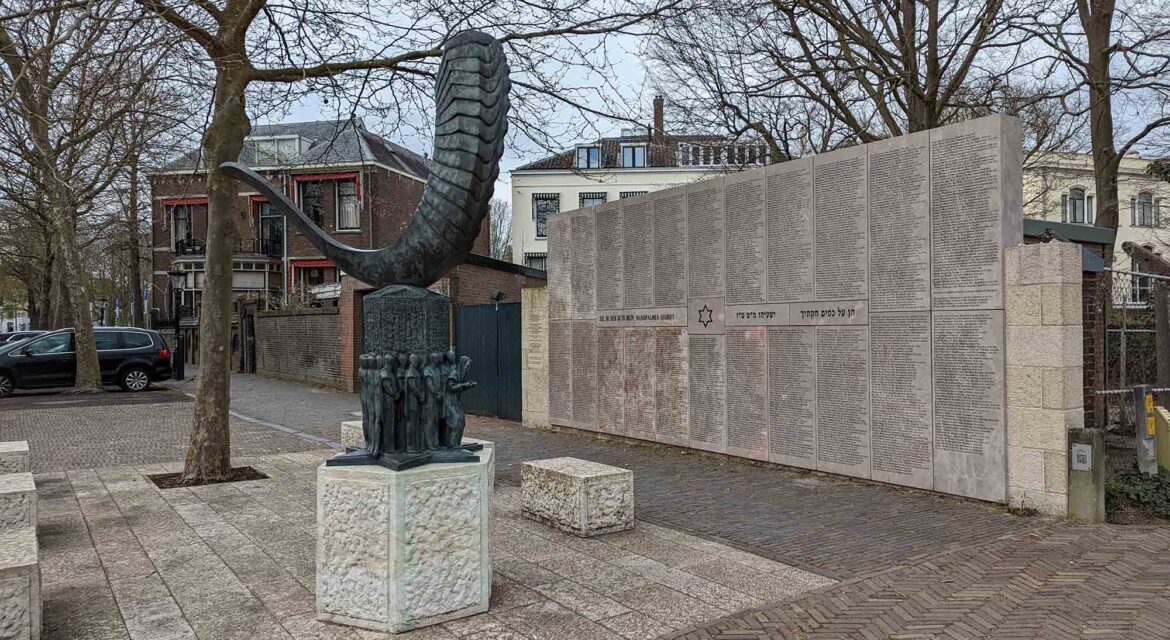 The Jewish Monument in Utrecht (Joods Monument) in the Netherlands was created to honor the memory of more than twelve hundred Jewish members of the community who did not survive World War II. Consisting of multiple elements that compel engagement and remembrance, the Jewish Monument showcases what it can mean for a landmark to connect with audiences across the eras.
The Jewish Monument in Utrecht (Joods Monument) in the Netherlands was created to honor the memory of more than twelve hundred Jewish members of the community who did not survive World War II. Consisting of multiple elements that compel engagement and remembrance, the Jewish Monument showcases what it can mean for a landmark to connect with audiences across the eras.

A Monument with Three Distinct Parts
 World War II had a major impact on the Jewish community in Utrecht, which saw more than 1,600 people deported. Jewish communities across the country were impacted in a similar manner but Utrecht was the only major city in the Netherlands without a Jewish monument. This fact would eventually compel the creation of the Jewish Monument which was finally installed in 2015.
World War II had a major impact on the Jewish community in Utrecht, which saw more than 1,600 people deported. Jewish communities across the country were impacted in a similar manner but Utrecht was the only major city in the Netherlands without a Jewish monument. This fact would eventually compel the creation of the Jewish Monument which was finally installed in 2015.
The monument consists of three distinct parts. A memorial wall features the names of the 1,239 names of Jewish people who died during the war along with the date of their death. In the middle of the wall is a verse from the Book of Isiah. It reads, “Zie, ik heb je in mijn handpalmen gegrift” (See, I’ve engraved you on my palms).
A bronze shofaris the second major element of the memorial. This symbol of hope resides on a pedestal that sits in front of the wall. It is carried by ten Jewish men (minyan) who read the kaddish. A sitting area defines the third part, which is comprised of multiple Jerusalem stone plateaus that offer a seating area for reflection around a tree and the shofaris.
Residing in front of Utrecht Maliebaan station, which had been closed in the 1930s but was reopened in the 1940s for the deportation of Jewish residents, the location underscores the significance of the monument. This connection highlights what it can mean for a monument to span areas, eras and entire communities.

Connected to the Culture and History of Utrecht
 Connected to the significant history of the Jewish community in the region, the Jewish Monument in Utrecht is connected to the history and culture of the city in a profound manner. By honoring this legacy in such a profound manner, the landmark connects to the past of the region in a way that is set to attract the attention of audiences in the present and future.
Connected to the significant history of the Jewish community in the region, the Jewish Monument in Utrecht is connected to the history and culture of the city in a profound manner. By honoring this legacy in such a profound manner, the landmark connects to the past of the region in a way that is set to attract the attention of audiences in the present and future.

